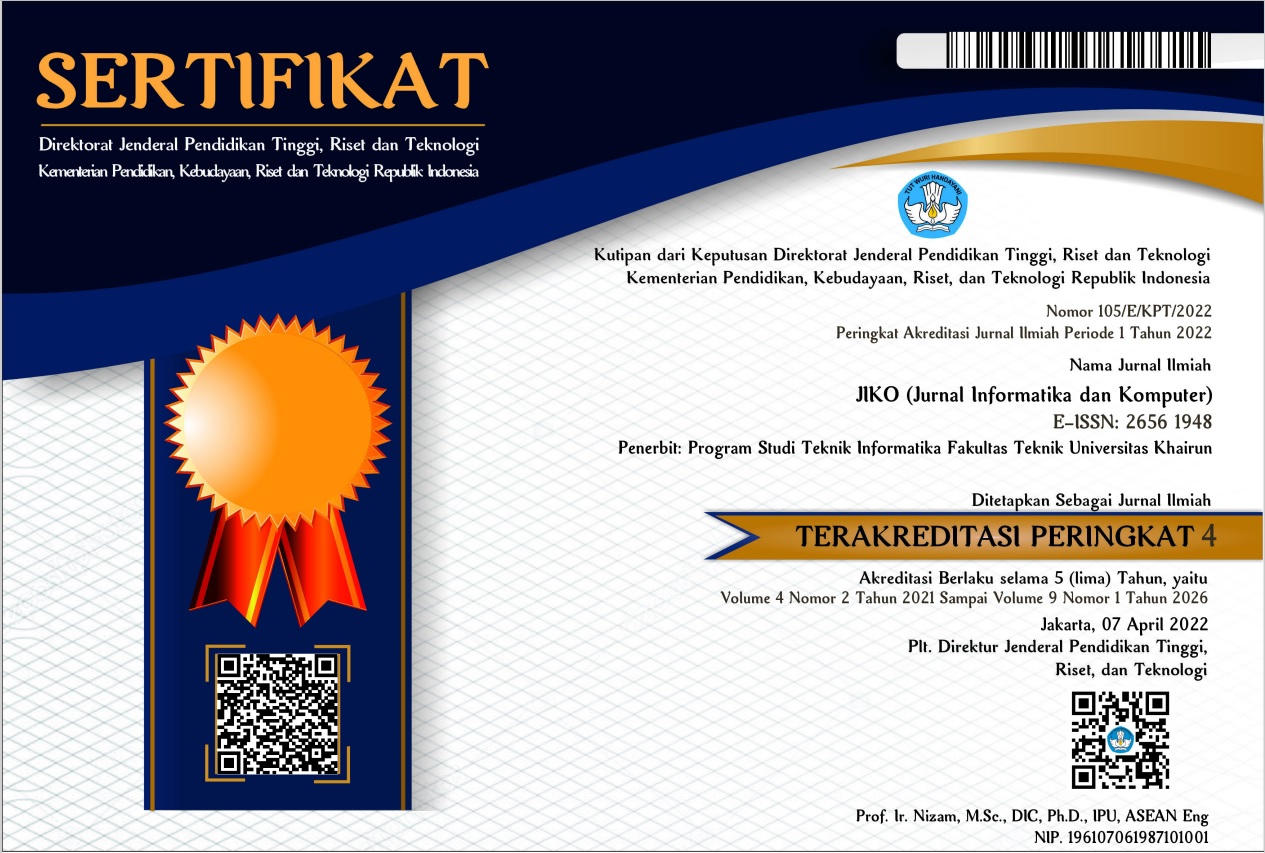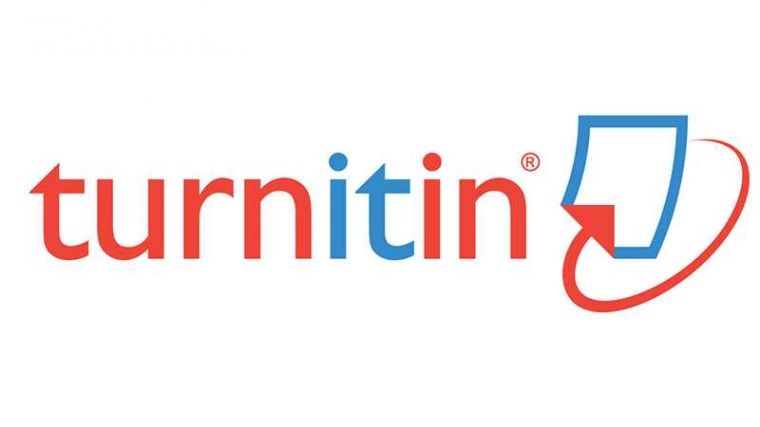RECOMMENDATION FOR HIGH SCHOOL DETERMINATION BASED ON ACADEMIC POTENTIAL USING NAÃÂVE BAYES METHOD
Abstract
Education is an important factor in educating the nation's generation. Indonesia has a 9-year learning program that forms the basis for every student at every school level. Not infrequently, some students are confused in choosing a secondary school, so many students still make the wrong choice because they do not constantly adjust to their academic potential, only follow friends' invitations to continue to high school, as well as encouragement from parents. Thus, when they continue to school, they become less enthusiastic and do not participate optimally in learning at school. This study aims to support students in finding alternative secondary schools that follow students' academic potential and assessment attributes in research. The method in this research is Nave Bayes because it can produce high school recommendations by finding the most significant probability value of the attributes used in studying subject values, craft scores, and the value of the extracurricular areas of interest. The results of high school recommendations for students of SMP Negeri 3 Seririt can be used as an information, and based on the results of testing using the Confusion Matrix on 40 student data, the accuracy is 58.33%, the calculation precision is 75%, and the recall calculation is 43%.
Full Text:
PDF (Bahasa Indonesia)References
D. D. Agama, “Buku Panduan Bantuan Operasional Sekolah dalam Rangka wajib Belajar 9 tahun,†Depdiknas Depag, Jakarta, 2007.
Y. Alpian, S. W. Anggraeni, U. Wiharti, and N. M. Soleha, “Pentingnya pendidikan bagi manusia,†J. Buana Pengabdi., vol. 1, no. 1, pp. 66–72, 2019.
N. Omeri, “Pentingnya pendidikan karakter dalam dunia pendidikan,†Manajer Pendidik., vol. 9, no. 3, 2015.
K. P. Nasional, “Panduan pendidikan karakter di sekolah menengah pertama,†Jakarta Direktorat Jenderal Manaj. Pendidik. dan Menengah, 2010.
L. Hakim, “Analisis perbedaan antara kurikulum KTSP dan kurikulum 2013,†J. Ilm. Didakt. Media Ilm. Pendidik. dan Pengajaran, vol. 17, no. 2, pp. 280–292, 2017.
H. Naparin, “Klasifikasi Peminatan Siswa SMA Menggunakan Metode Naive Bayes,†Syst. Inf. Syst. Informatics J, vol. 2, no. 1, pp. 25–32, 2016.
L. Fajarwati, “Pelaksanaan Kegiatan Career Day dalam Bidang Bimbingan Karir untuk Meningkatkan Pemahaman Siswa Terhadap Sekolah Lanjutan pada Siswa Kelas 9.4 SMP Negeri 19 Kota Bekasi Tahun Ajaran 2016/2017,†INSIGHT J. Bimbing. Konseling, vol. 7, no. 1, pp. 107–115, 2018.
E. Rasywir, “Implementasi Sistem Penentuan Skripsi Mahasiswa Stikom Jambi Dengan Emclustering Dan Naïve-Bayes,†J. Process., vol. 12, no. 1, pp. 880–893, 2017.
T. D. Salma and Y. S. Nugroho, “Sistem Rekomendasi Pemilihan Sekolah Menengah Tingkat Atas Menggunakan Metode Naive Bayes,†Khazanah Inform. J. Ilmu Komput. dan Inform., vol. 2, no. 2, pp. 85–94, 2016.
G. W. N. Wibowo, “Prediksi Kelanjutan Studi Siswa Ke Perguruan Tinggi Dengan Naive Bayes,†J. DISPROTEK, vol. 11, no. 1, pp. 41–46, 2020.
A. Saleh and F. Nasari, “Penggunaan Teknik Unsupervised Discretization pada Metode Naive Bayes dalam Menentukan Jurusan Siswa Madrasah Aliyah,†J. Teknol. Inf. Dan Ilmu Komput., vol. 5, no. 3, pp. 353–360, 2018.
A. Z. Mafakhir and A. Solichin, “Penerapan Metode Naïve Bayes Classifier Untuk Penjurusan Siswa Pada Madrasah Aliyah Al-Falah Jakarta,†Fountain Informatics J., vol. 5, no. 1, p. 21, 2020.
M. K. Anam, B. N. Pikir, and M. B. Firdaus, “Penerapan Na ̈ıve Bayes Classifier, K-Nearest Neighbor (KNN) dan Decision Tree untuk Menganalisis Sentimen pada Interaksi Netizen danPemeritah,†MATRIK J. Manajemen, Tek. Inform. dan Rekayasa Komput., vol. 21, no. 1, pp. 139–150, 2021.
B. H. Hayadi, I. G. I. Sudipa, and A. P. Windarto, “Model Peramalan Artificial Neural Network pada Peserta KB Aktif Jalur Pemerintahan menggunakan Artificial Neural Network Back-Propagation,†MATRIK J. Manajemen, Tek. Inform. Dan Rekayasa Komput., vol. 21, no. 1, pp. 11–20, 2021.
D. Nofriansyah, K. Erwansyah, and M. Ramadhan, “Penerapan Data Mining dengan Algoritma Naive Bayes Clasifier untuk Mengetahui Minat Beli Pelanggan terhadap Kartu Internet XL (Studi Kasus di CV. Sumber Utama Telekomunikasi),†J. Saintikom, vol. 15, no. 2, 2016.
N. L. W. S. R. Ginantra et al., Basis Data: Teori dan Perancangan. Yayasan Kita Menulis, 2020. [Online]. Available: https://kitamenulis.id/2020/10/08/basis-data-teori-dan-perancangan/
F. Fenando, “Implementasi E-Commerce Berbasis Web pada Toko Denia Donuts Menggunakan Metode Prototype,†JUSIFO (Jurnal Sist. Informasi), vol. 6, no. 2, pp. 66–77, 2020, doi: https://doi.org/10.19109/jusifo.v6i2.6532.
I. K. A. G. Wiguna, D. P. D. K. Dewi, and I. G. I. Sudipa, “Implementasi OLAP pada Data Kerja Praktik dan Tugas Akhir Menggunakan Framework Modular Cube JS,†INFORMAL Informatics J., vol. 6, no. 3, pp. 142–153, 2021, doi: https://doi.org/10.19184/isj.v6i3.27614.
M. M. Saritas and A. Yasar, “Performance analysis of ANN and Naive Bayes classification algorithm for data classification,†Int. J. Intell. Syst. Appl. Eng., vol. 7, no. 2, pp. 88–91, 2019.
A. W. Syaputri, E. Irwandi, and M. Mustakim, “Naïve Bayes Algorithm for Classification of Student Major’s Specialization,†J. Intell. Comput. Heal. Informatics, vol. 1, no. 1, pp. 15–19, 2020.
DOI: https://doi.org/10.33387/jiko.v5i2.4668
Refbacks
- There are currently no refbacks.











